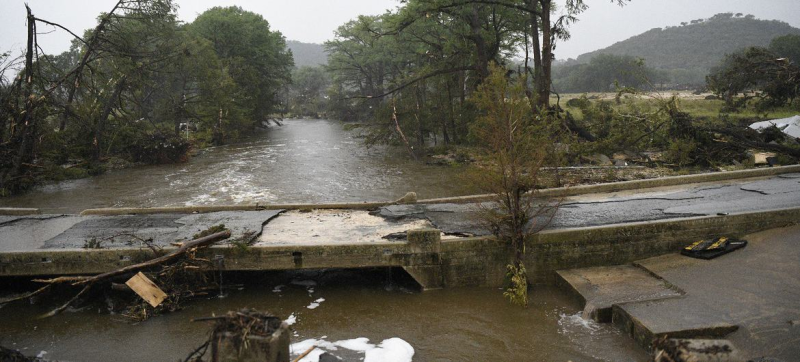- Cold wave disrupts life, livelihoods across northern Bangladesh |
- US to Exit 66 UN and Global Bodies Under New Policy Shift |
- LPG Supply Restored Nationwide After Traders End Strike |
- Stocks advance at both bourses; turnover improves |
- LCs surge for stable dollar, but settlement still sluggish |
Texas Flash Floods Reveal Gaps in Early Warning Systems

Catastrophic flooding has caused widespread devastation in central Texas in the United States.
The deadly flash floods in central Texas that claimed more than 100 lives over the July Fourth weekend in the United States have underscored the devastating power of this fast-onset hazard — and the critical challenge of ensuring early warnings reach vulnerable populations, even in the dead of night.
The UN World Meteorological Organization (WMO) said the tragedy highlights growing global challenges related to extreme rainfall, warning dissemination, and community preparedness.
Flash floods are the most lethal form of flooding, responsible for over 5,000 deaths annually and 85 per cent of all flood-related fatalities worldwide, according to WMO data. They also cause more than $50 billion in economic losses each year.
“Unlike slow-onset river floods, flash floods leave very limited time for reaction,” the agency said in a news release on Wednesday.
“That makes accurate short-term forecasting and community preparedness essential.”
NASA’s IMERG multi-satellite precipitation data showed intense rainfall over central Texas on 4 July 2025.
Overnight between 3 and 4 July, torrential rain — up to 46 centimetres (about 18 inches) in just a few hours — sent a wall of water surging through Kerr County’s Guadalupe River basin at around 4 a.m., catching many residents and vacationers off guard.
The US National Weather Service had issued timely alerts, including a flash flood watch more than 12 hours in advance, later upgraded to a flash flood emergency about three hours before the impact.
Although warnings were disseminated via Weather Radio, emergency management systems, and TV and radio stations, many people — including hundreds of children at summer camps — were not reached in time.
Floodwaters rose dramatically as the Guadalupe River surged nearly 8 metres (about 26 feet) in just 45 minutes.
Among the hardest hit was the all-girls summer camp, Camp Mystic, where at least 27 campers and counsellors lost their lives, according to media reports. Texas state authorities report that more than 160 people remain missing.
The disaster has triggered one of the largest search-and-rescue operations in the state's history.
Flash floods are not new, but their frequency and severity are increasing in many regions due to rapid urbanization, land-use changes, and a warming climate.
“A warmer atmosphere holds more moisture, which means extreme rainfall events are becoming more frequent,” the WMO said.
The Texas disaster joins a growing list of catastrophic floods in recent years. In 2022, flash floods in Pakistan killed over 1,700 people and displaced millions. In 2024, floods across Europe, the Middle East, and Africa caused $36 billion in economic losses.
Just this week, a flash flood on the Nepalese-Chinese border swept away the main bridge linking the two countries.
To support countries in predicting and responding to flash floods, WMO operates the Flash Flood Guidance System — a real-time forecasting platform used in over 70 countries. It integrates satellite data, radar, and weather models to detect local threats and offers training to build national forecasting capacity.
Beyond technology, WMO plays a key role in strengthening national expertise, certifying professionals, and coordinating real-time responses between forecasting agencies and disaster management bodies.

